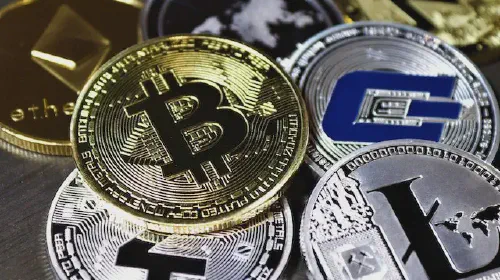Impact of 5G on the Future of Digital Payments
Salomon Kisters
Jun 13, 2023This post may contain affiliate links. If you use these links to buy something we may earn a commission. Thanks!
The world is constantly evolving, and technology is advancing at an unprecedented rate. With the advent of 5G technology, we are entering a new era of digital transformation.
The impact of 5G is felt across multiple industries, and the digital payments industry is no exception. As we move towards a more connected world, it is imperative that we understand the implications of 5G on digital payments.
In this blog post, we will explore the potential of 5G technology and the impact it will have on the future of digital payments. We will examine the opportunities and challenges that 5G presents and how it will redefine the digital payments landscape.
So, let’s dive into the world of 5G and digital payments and explore the possibilities that await us.
Understanding the Basics of 5G and Its Implications for Digital Payments
The fifth generation of wireless technology, or 5G, promises to be a game changer in the world of digital payments. To truly understand the implications of 5G on digital payments, it’s important to first understand the basics of this technology.
5G is the next step in the evolution of wireless technology, building on the foundation of the current 4G or LTE networks. 5G networks boast faster speeds, lower latency, and greater capacity than their predecessors. This means that consumers will be able to make digital payments more quickly and easily than ever before. Transactions that previously required minutes to complete will now be processed in mere seconds, making digital payments a more practical and efficient option for consumers and merchants alike.
One of the most significant implications of 5G for digital payments is the potential for enhanced security. With faster speeds and greater capacity, 5G networks will be able to support more robust security protocols and encryption measures. This will make it more difficult for cyber-criminals to intercept or manipulate transactions, providing greater peace of mind for those engaging in digital payments.
Another important factor to consider when looking at the impact of 5G on digital payments is the potential for greater accessibility. 5G technology enables a wider range of devices to connect to the internet, including those that may not have been able to do so before. This means that more consumers will have access to digital payment options, opening up new markets for merchants and providing greater convenience for consumers.
How the Rollout of 5G Will Affect Adoption of Digital Payments
While the potential benefits of 5G connectivity on digital payments are vast, there are also some challenges that need to be considered. One major issue that could arise is compatibility between different networks and devices. As 5G networks continue to roll out globally, not all devices may be equipped to handle the new technology. This could lead to a lag in 5G adoption for digital payments until merchants and consumers are all equipped with 5G-compatible devices.
In addition to device compatibility, there may also be variations in 5G network speeds and coverage across different regions and countries. This could potentially create a digital divide between areas that have access to 5G networks and those that do not. Merchants may need to tailor their digital payment offerings accordingly to ensure that they are accessible to all consumers, regardless of their location and network capability.
Another potential challenge is the need for infrastructure upgrades. To fully utilize the capabilities of 5G networks for digital payments, merchants and financial institutions may need to invest in upgrading their payment processing systems and networks. This could be a costly and time-consuming process that could hinder the early adoption of 5G for digital payments.
Despite these challenges, the potential benefits of 5G for digital payments remain significant and cannot be ignored. As technology continues to evolve, businesses and consumers need to stay informed and adapt to these changes to fully realize the potential of 5G connectivity for digital payments.
Enhanced Security and Privacy Features Enabled by 5G for Digital Payments
Apart from faster transaction speeds and improved network coverage, 5G also brings about enhanced security and privacy features that can benefit digital payments. The stronger encryption capabilities of 5G networks make it harder for hackers to intercept and steal sensitive financial information during transactions. This reduces the risks of fraud and identity theft, making digital payments more secure.
Moreover, 5G networks enable greater control over privacy settings, giving consumers more control over their personal data. The network architecture of 5G allows for network slicing, which means that data can be compartmentalized and kept within a specific part of the network. This helps to reduce the risks of data breaches and unauthorized access to sensitive information.
With the increased speed and connectivity of 5G, there is also greater potential for biometric authentication methods such as facial recognition or fingerprint scanning to be used for digital payments. This adds an additional layer of security to transactions, making them even more secure.
The Role of AI and Machine Learning in Optimizing 5G-Enabled Digital Payments
Artificial intelligence (AI) and machine learning are set to play a significant role in optimizing digital payments enabled by 5G networks. With faster connectivity and processing power, 5G opens up opportunities for new data-driven technologies to enhance digital payments.
One key area where AI and machine learning can be leveraged is fraud detection and prevention. By analyzing large amounts of transaction data in real-time, AI-powered fraud detection systems can quickly identify and flag suspicious transactions. This can help to reduce the risk of fraudulent activities and protect consumers’ financial information.
Beyond fraud detection, AI and machine learning can also be used to personalize the digital payment experience for consumers. By analyzing transactional data and user behavior patterns, digital payment solutions can offer personalized recommendations for products and services that are tailored to individual needs and preferences. This can improve the overall user experience and increase customer satisfaction.
In addition to personalization, AI and machine learning can also be used to optimize payment processing times. By analyzing historical payment data, these technologies can identify trends and patterns to optimize payment routing and streamline transaction processing. This can result in faster and more efficient payments, improving the overall customer experience.
A Glance into the Future: Exploring the Potential of 5G for Digital Payments Beyond 2021
As we look towards the future, the potential for 5G-enabled digital payments only continues to grow. One area of potential expansion is in the adoption of contactless payments, which have become increasingly popular in recent years. With 5G’s fast speeds and lower latency, contactless transactions can become even more seamless and efficient.
Another area of potential growth is in the use of mobile wallets. With 5G’s enhanced connectivity, mobile wallets can become even more ubiquitous, offering consumers a convenient, secure, and fast way to make transactions on the go. As mobile payments continue to gain traction, 5G can provide the necessary infrastructure to support this shift toward a cashless society.
Furthermore, the rise of the Internet of Things (IoT) also presents an opportunity for 5G-enabled digital payments. With the increasing number of connected devices, there will be a need for a secure and efficient way to process microtransactions. 5G’s fast processing power and low latency can provide the necessary infrastructure to support such transactions, opening up new avenues for payment in the connected world.
The potential for 5G-enabled digital payments beyond 2023 is vast. From contactless payments to mobile wallets to IoT transactions, the possibilities for innovation and growth are endless. As businesses continue to adapt to the changing landscape of digital payments, 5G will undoubtedly play a crucial role in shaping the future of payments.
Stay informed with the latest insights in Crypto, Blockchain, and Cyber-Security! Subscribe to our newsletter now to receive exclusive updates, expert analyses, and current developments directly to your inbox. Don't miss the opportunity to expand your knowledge and stay up-to-date.
Love what you're reading? Subscribe for top stories in Crypto, Blockchain, and Cyber-Security. Stay informed with exclusive updates.
Please note that the Content may have been generated with the Help of AI. The editorial content of OriginStamp AG does not constitute a recommendation for investment or purchase advice. In principle, an investment can also lead to a total loss. Therefore, please seek advice before making an investment decision.

Top 10 Countries Leading in Crypto and Bitcoin Adoption - Find Out Now!
Discover the top 10 countries leading in crypto and Bitcoin adoption, from the United States to Switzerland. See who's at the forefront of digital currency!

What is an Unconfirmed Bitcoin Transaction?
An unconfirmed Bitcoin transaction denotes that a miner is yet to confirm whatever payments you made. Let's have a closer look."

Total Number of Cryptocurrencies in 2023: Over 22,000 Virtual Currencies
As of 2023, there are over 22,000 cryptocurrencies in circulation, with only a few expected to survive long-term due to solid fundamentals and continuous development.
Protect your documents
Your gateway to unforgeable data. Imprint the authenticity of your information with our blockchain timestamp